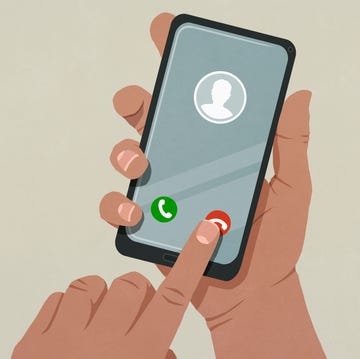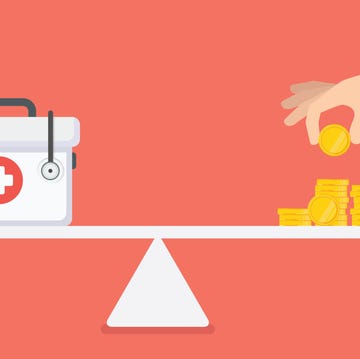Had to wait ages to get a doctor’s appointment, or found it difficult to see your GP in person? You are not alone. The latest figures show that for many of us it can be a frustrating and stressful process with 4 million, or 16.8%, of patients having to wait over two weeks to see their doctor and 1 million having to wait more than four weeks.
While it’s true some patients might have chosen to book a routine or follow-up appointment in advance, the overall picture is that there’s a growing gap between patient demand and appointment capacity with just 54% of patients in the 2023 GP Patient Survey describing their overall experience of making an appointment as good (an all-time low) and 28% finding it too difficult to make an appointment at all.
So if you’ve been struggling to see your GP face to face this is what you need to know.
Why is it difficult to book a face-to-face GP appointment?
NHS data shows that GPs carried out almost 30 million appointments in the first quarter of this year, with 44% taking place on the same day and 83% within two weeks.
Almost two thirds, or 65%, were carried out face-to face and 26% were telephone appointments. The Royal College of GPs also point out that doctors are delivering more appointments than ever – 4.8 million more than over the same period the year before. So why does it feel so difficult to get one when you need it?
Professor Kamila Hawthorne, Chair of the Royal College of GPs says: "Of the many challenges facing general practice, the intense workload and workforce pressures GPs and our teams are working under are the most acute. We simply won't be able to meet the growing patient need for our care if we don't have enough fully-qualified GPs, and the numbers are dropping." High levels of stress and burnout amongst GPs mean many are leaving the profession early, creating a vicious circle.
On average the number of patients each full-time GP is responsible for looking after is now 2,295 – up 260 on six years ago. As Good Housekeeping's Sarah Jarvis explains, being responsible for more patients means that even with more appointments available, it’s still harder to be seen: "If a GP previously did 100 consultations and 120 people needed seeing on an average day then 20 wouldn’t get a face-to-face appointment, but now if we are doing 110 consultations but 150 people need seeing it means 40 people won’t get one."
In the rest of the UK, it's a mixed picture but there is also an ever increasing GP workload. GPs in Northern Ireland now carry out over 200,000 patient consultations every week and a single full-time GP in Scotland is now responsible for 1,715 patients – a 13% increase – although 84% of patients in Scotland reported that if they needed an urgent appointment they were able to see or speak to a doctor or a nurse from their GP practice within 2 working days. In Wales, more than 80% of GPs surveyed by the doctor’s union BMA Cymru Wales’ said they fear they are unable to provide quality and safe care to patients due to their excessive workloads, diminishing workforce, and the rising demands on the service. They say there are now 18% fewer surgeries available to people in Wales, with GPs taking on an unsustainable 32% more patients each.
Do you have a right to demand a face-to-face appointment?
"A lot of patients assume they can have a face-to-face appointment if they want one, but in fact it is down to the doctor’s clinical judgement. If the doctor feels that it is necessary to see you in order to make a diagnosis they are required by the General Medical Council (GMC) to provide a face to face appointment. But with so many people needing appointments, sadly there just aren’t enough GPs to give everybody a face-to-face appointment who ‘wants’ rather than ‘needs’ one," explains Dr Jarvis.
"But if you feel you need a face-to-face appointment and you aren't offered one, ask your GP why they feel confident making a diagnosis without seeing you. However, you might be surprised how much of the information needed to make a diagnosis comes from the doctor asking the right detailed questions rather than from examining you."
Many GP practices also now use digital triage, where you fill in an online consultation form via the doctor’s website and the GP will triage your request and decide the most appropriate course of action. Try to be clear and specific when filling in the form and say why your issue is urgent and you feel you need a face-to-face appointment. If you are still unhappy, the Patients Association recommends you speak to the practice manager in the first instance to discuss how your preference can be respected.
If you need more advice you can call their free helpline on 0800 345 7115.
Are face-to-face appointments safer than remote consultations?
According to a study into the safety of remote access by Oxford researchers published in BMJ Quality and Safety Journal last November, mistakes are rare. "For most patients it is absolutely safe but it is more difficult to assess the very young and the elderly and there are some conditions that are more dangerous to treat remotely – for example chest and abdominal pain or breathing difficulties, or where a condition isn’t resolving as expected, or people are having multiple telephone calls without being seen face-to-face," explains Dr Rebecca Payne, a GP and one of the researchers.
The study concluded that an in-person appointment is likely to be needed for: chest pain or shortness of breath, abdominal pain, an unusual lump, a new psychotic illness, a persistent skin problem, if a child or someone in care is unwell or if you have already had two remote appointments for a problem that is not improving.
To help make your remote care safer, during the consultation you should tell your doctor all the key points about your current problem, even if you have told someone else from the surgery beforehand and mention any other conditions that may be relevant, for example, diabetes, or a heart or chest condition.
If you are very concerned about the problem, especially if things are getting worse, say so clearly. "At the end of the consultation, ask what the next steps are, who to contact if things do not go to plan and if you can be sent instructions or texted a link to a patient information leaflet," advises Dr Payne.
Can you see your pharmacist instead?
If you are struggling to see your GP, your local pharmacist might be able to help instead under the Pharmacy First initiative which was launched in January this year. It allows you to get advice and treatment, including prescription-only medication such as antibiotics, for the following seven minor ailments: sore throat, earache, sinusitis, shingles, infected insect bites, impetigo or an uncomplicated urinary tract infection.
"It's a positive step for patients as it means they can get care on the same day without having to wait for a GP appointment and they also get access to a fully trained and highly qualified health care professional," explains community pharmacist Thorrun Govind.
You can get treatment by walking into one of the 10,000 pharmacies that have already signed up to the scheme, or your GP receptionist or NHS 111 might refer you to one. There are strict inclusion criteria (some age groups are excluded), and the pharmacist will see you in a private consultation room and may perform an examination, or ask to access your medical records.
"The pharmacist will be able to recommend the best course of action including issuing a prescription if necessary," explains Govind, "or referring you to your GP, or another health professional if your condition is more serious and needs further investigation."
In addition, the NHS Community Pharmacist Consultation Service in England allows you to get a free pharmacist consultation and advice within a day for a wide range of other common illnesses such as coughs, colds, diarrhoea, hay fever, headaches and more. The pharmacist can advise you and sell you over-the-counter treatments, which are often the same as your GP would offer on prescription. You can get a referral from your GP practice without seeing the GP, or from NHS 111.














